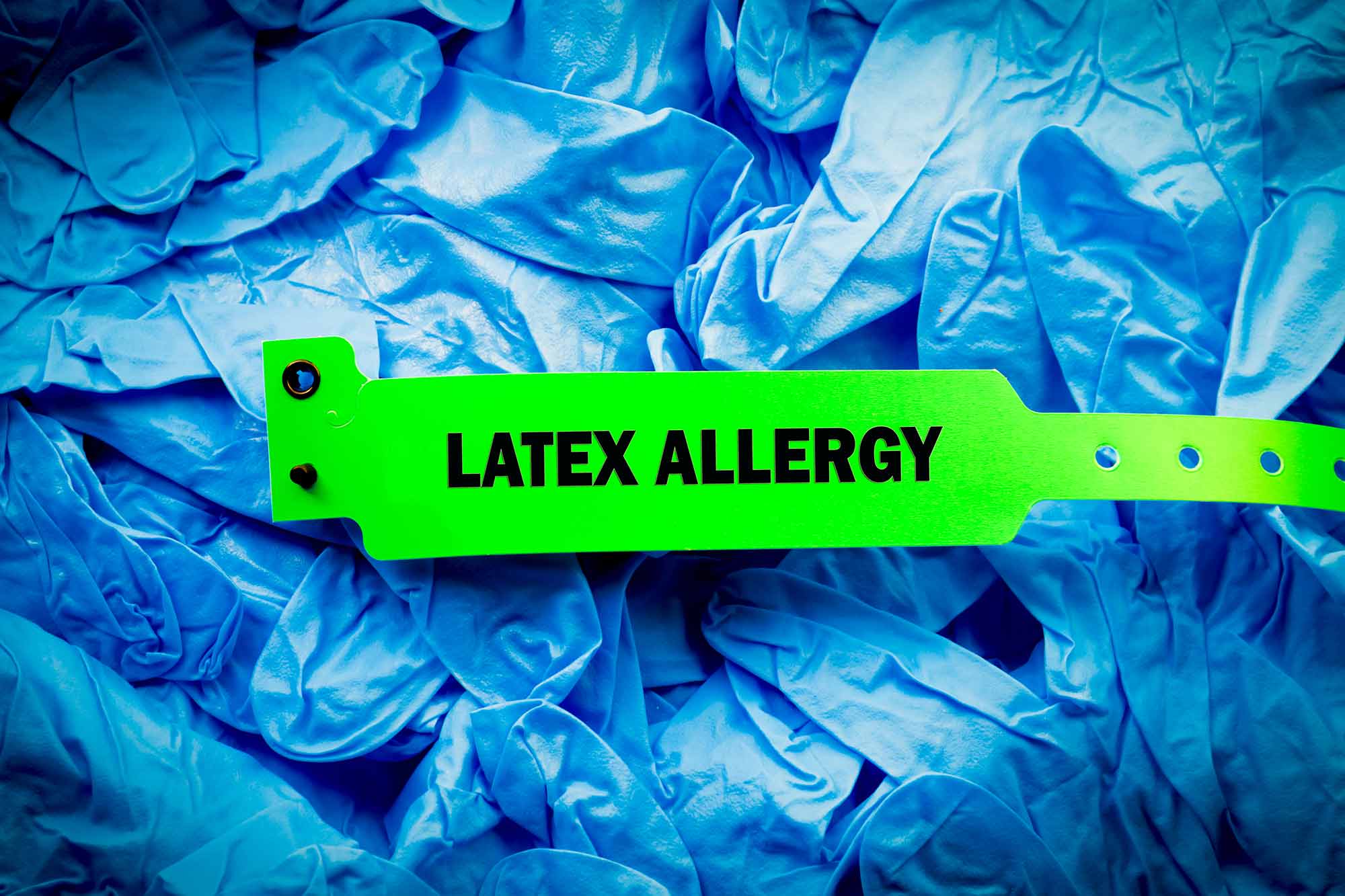Latex lurks in everything from balloons to rubber bands to gloves and can cause skin and respiratory allergic reactions in a growing number of people. Are you doing all you can to ensure the safety of those with latex allergies at your events?
While latex allergies used to be fairly rare, now up to 6 percent of people in the U.S. are estimated to react to this natural rubber substance. Those who work with latex a lot, such as healthcare and foodservice workers, are even more likely to develop an allergy — up to 17 percent become allergic to the product, as well as 34 percent of children who have had more than three surgical procedures, and 11 percent of the elderly.
Reactions can be triggered by touching something made of latex, inhaling latex protein particles floating in the air, and by eating food prepared by people wearing latex gloves. They can range from mild dermatitis to life-threatening anaphylaxis. And because latex proteins are easily transferrable from gloves to other surfaces, and moisture on the contact surfaces can make that transfer even easier, it doesn’t take much for an entire kitchen to become contaminated with latex when even just a few workers are wearing the gloves. It has been acknowledged as a allergen by the FDA since the organization updated its Food Code in 2013.
While the high cost of latex gloves has already led many food service establishments to go with lower cost alternatives such as nitrile or vinyl, the problem still has become pervasive enough that Arizona, Connecticut, Hawaii, Oregon, Ohio, and, as of Jan. 1, 2020, California, have put in place legislation banning latex gloves from use in retail food establishments.
So it would be a good idea to add latex to the list of allergens you ask attendees about on your registration form and, if they indicate they have a severe allergy, ask if they carry an Epi-pen. It’s also a good idea to ask the catering department what they use for gloves during food prep, especially if you learn you have someone with a latex allergy coming to your event. If they’re not sure, ask to look for yourself during your site visit. According to LatexAllergyInfo.com, also ask if they know what types of gloves are used to make any breads, salads, desserts, or other prepared foods they use that are not made in house. It’s even possible that the people working in the ice supply facility could be using latex gloves, which again could trigger a reaction in someone with an allergy to the substance.
I was talking with Tamara, a friend of a friend who is a medical professional who has severe latex allergies, the other day, and she reminded me that there also is a host of latex cross-reactive foods that some who have a latex allergy may also be sensitive to because these foods contain proteins similar to what you find in natural rubber tree sap. These include:
Tamara said she found out about both her latex and her cross-reactive food allergies when, after going out for Mexican food on her monthly date night with her spouse, she was getting progressively more intense swelling and redness on her face. It would go away in between nights out, then get worse as she dipped into the guacamole the next month. Add in a little latex-enhanced romance, and it became apparent before too long what was causing the problem — and it wasn’t her spouse!
In case you needed one, this cross-reactive latex-related food allergy is just one more reason to detail all ingredients when you label your food items so attendees can gauge whether or not a dish is safe for them to eat. While Tamara says the conferences she has attended in recent years have been much better about labeling, even so, she can’t have fruit salad where the melon is comingled, for example, so it is a welcome touch when the meeting organizer can provide meals where substances she is allergic too are not plated along with what she can safely eat.
Have you encountered attendees with a latex allergy? If so, what did you do to accommodate them?




